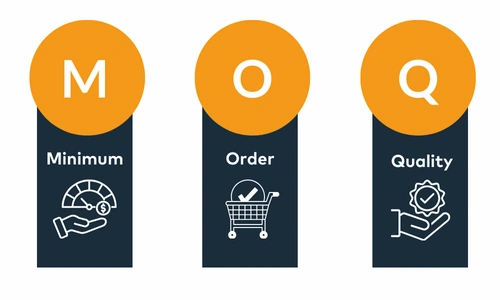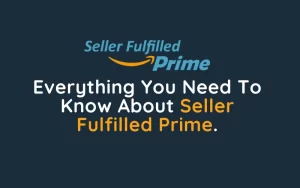
In the world of eCommerce and wholesale, Minimum Order Quantity (MOQ) is a term you’ll hear often. So, what does MOQ mean? It referred to the smallest quantity of products that a supplier is willing to sell in a single order. For eCommerce businesses, understanding and managing MOQ effectively is crucial for inventory control, cost management, and ensuring smooth order fulfilment. Whether you’re a small startup or a large business, the way you handle MOQ will influence your supply chain and bottom line. In this blog, we’ll discuss the details of MOQ, explore the impact of both high MOQ and low MOQ, and learn how to calculate and manage it for your business to thrive.
High MOQ vs. Low MOQ
When considering MOQ stock, you’ll often come across terms like high MOQ and low MOQ. These represent the quantity of products you need to purchase from a supplier. Each has its own set of benefits and challenges.
High MOQ
High MOQ is typically required by larger suppliers who aim to make their production more cost-effective. When purchasing in bulk, the cost per unit can be lower, which can benefit businesses with large sales volumes. However, businesses with limited storage capacity or cash flow may find high MOQ to be risky. Overstocking may lead to extra storage fees and the possibility of having unsold products.
Low MOQ
On the other hand, low MOQ is often appealing to small businesses or those just starting out. It allows for smaller, more flexible orders and reduces the risk of carrying excess stock. However, the downside is that low MOQ typically comes with a higher per-unit price. But for startups testing the market or experimenting with a new product line, the ability to place small orders can be essential for growth
Managing MOQ with FIFO and SKU Systems
Efficiently managing MOQ stock can be complex, especially when dealing with high MOQ. A good practice is to implement FIFO and a solid SKU (Stock Keeping Unit) system. These systems allow businesses to track inventory efficiently and avoid the pitfalls of overstocking or stockouts.
With FIFO, products that enter the inventory first are sold first. This is especially useful in industries where products have expiration dates or where trends may shift quickly. FIFO helps ensure that older products don’t linger on the shelves, thus reducing the risk of spoilage or loss in value. When combined with a well-organised SKU system, which tracks every unique product in your inventory, FIFO becomes a powerful tool to manage MOQ stock effectively. By knowing which products are turning over faster and which ones are not, you can adjust your MOQ calculations accordingly.
For those working with 3PL logistics providers, like PackPro, FIFO and SKU management can be easily integrated into the fulfillment process. 3PL providers can store, track, and manage your inventory, ensuring that your stock moves efficiently and in the right order, reducing the risk of stockouts or wastage. They also offer expert advice on optimising your order fulfilment process.
How to Calculate MOQ
Calculating your ideal MOQ involves more than just figuring out the smallest possible order quantity from a supplier. It’s about balancing the cost-effectiveness of bulk purchasing with the risk of carrying excess inventory. Here’s how to approach it:
Historical Sales Data: Start by examining past sales trends for each SKU. How many units did you sell last month or quarter? Understanding your sales velocity helps you avoid over-ordering or under-ordering products.
Lead Times and Supply Chain Considerations: Factor in the lead time it takes for your supplier to deliver your order. If your lead times are long, you may need to order larger quantities to ensure you don’t run out of stock. Consider working with a 3PL logistics UK partner, like PackPro, who can help store and manage your products during the waiting period.
Production Costs and Discounts: Ordering in bulk often leads to lower per-unit prices. However, you should also weigh this against potential storage and insurance costs. With low MOQ, your per-unit price may be higher, but you avoid overstocking and wasted inventory.
Storage and Space: Consider your warehousing capabilities. High MOQ orders require more space for storage, which could increase costs. If you’re working with a 3PL provider, they can assist with inventory storage and order fulfilment, ensuring you have the space for bulk orders without the burden of managing it yourself.
Cash Flow: High MOQ often requires a larger upfront investment, which can strain cash flow, particularly for smaller businesses. Low MOQ may ease the cash flow burden, but at the cost of higher product prices. Understanding your financial situation will help you decide the optimal MOQ.
Once you have these factors in mind, calculate the MOQ that best suits your business’s cash flow, demand forecasts, and storage capacity. By doing this, you ensure that you’re not over-committing financially or leaving yourself short of stock when demand spikes.
MOQ and Order Fulfilment
Effective order fulfilment is essential in the eCommerce industry, and managing MOQ stock plays a crucial role in ensuring smooth operations. When you place an order with a supplier, you need to ensure that the product reaches your customers on time, and that you have enough stock to fulfil all orders. If your MOQ is too high, you might end up with too much stock, causing storage issues. Conversely, too low an MOQ might lead to stockouts, frustrating customers and harming your reputation.
Working with a 3PL logistics UK partner like PackPro can help mitigate these risks. They can take care of storage, inventory tracking, and fulfilment on your behalf. With their expertise in fulfilment, you can trust that your inventory will be well-managed, ensuring timely stock availability and fast, efficient shipping to your customers.
Additionally, 3PL providers often offer advanced inventory management systems that allow you to monitor your stock levels, track trends, and adjust your MOQ accordingly. This provides flexibility and control over your inventory, helping you maintain a steady flow of products without overstocking or understocking.
Conclusion
Understanding MOQ and managing MOQ stock effectively is essential for maintaining control over your inventory and ensuring efficient order fulfilment. Whether you’re dealing with a high MOQ or a low MOQ, calculating the right quantity of products to purchase is key to reducing costs, managing cash flow, and improving your supply chain. By implementing systems like FIFO and partnering with a reliable 3PL logistics provider like PackPro, you can ensure that your products are stored, managed, and shipped efficiently, while also maintaining the flexibility needed for growth.



